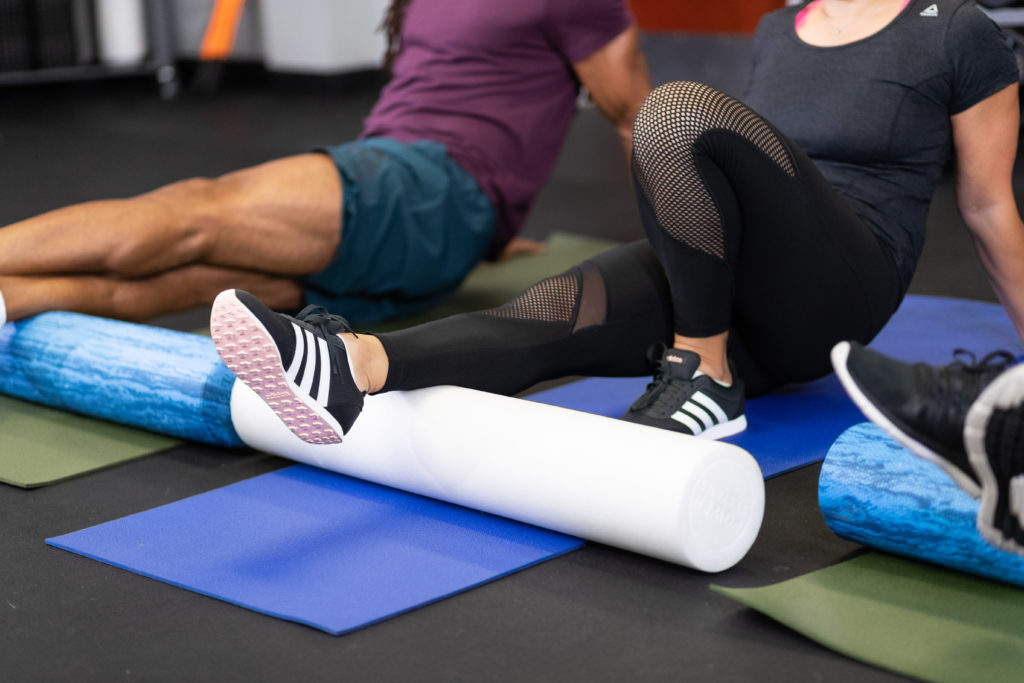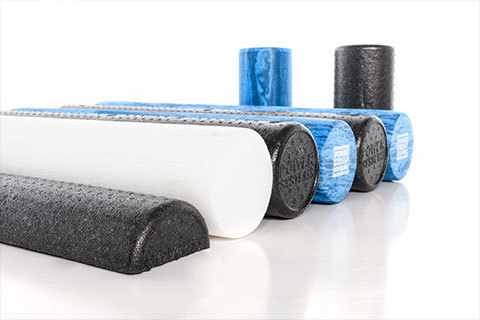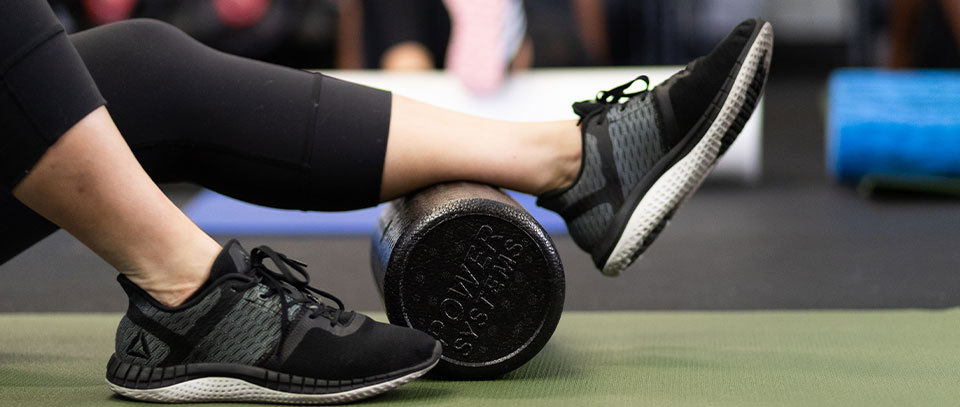When it comes to using a foam roller, I believe the majority of the population falls into one of four categories – you either:
- Love it!
- Hate it!
- Love to hate it!
- Don’t know if you should Love it or Hate it.
No matter what category you fall into, here are some general DOS and DON’TS when it comes to self-myofascial release (AKA foam rolling or SMR).
- You can DO your foam rolling before and/or after a workout.
Like it, love it, or hate it – foam rolling is good for you. It helps to increase circulation, range of motion, and flexibility by breaking up tissue adhesions developed from exercising, an injury, or repetitive postures or movements. Performing SMR before a workout will assist with warming up the tissue and increase the active range of motion for a particular area.
For example, if you are planning on a lower body workout that will include squats – you will want to be sure to at least foam roll your calves before you start. By increasing blood circulation and flexibility of the calf complex (gastrocnemius and soleus), you can increase your active range of motion (or getting you’re A.T.G) during your squat.

Using a foam roller after a workout can help preserve or maintain flexibility by breaking up tissue adhesions before they settle into the big, painful knots that can restrict your muscles from contracting and relaxing at full capacity.
- DO take your time.
I know it can be painful at times and you just want it to be over. However, to get full benefits of SMR you should roll no faster than 1 inch per second over the muscle group. This gives your neuromuscular system a chance to identify the stimulus from the foam roller. It also gives you the chance to expose the “knots” that you need to work on. Once you find one, hold pressure on it as comfortably as you can for about 30 seconds – or 3-4 deep breaths – then slowly continue to roll the tissue.
- DO foam roll when you are sore.
Unfortunately, this will be painful – however, when you finish your level of soreness should be somewhat diminished. Remember to follow the “pain scale” while using your foam roller, just as you would with cardio or strength training. On a scale from 1 to 10 (1=no pain 10=excruciating), you should not be higher than a 4 – 5. If it is too painful, you will tense up either at the area you are trying to release or in other areas as you try to compensate for the pain.
If it seems foam rolling always has you at a pain level of 5+, implement some regressions such as:
- Use two foam rollers side by side to increase the surface area of contact
- Use a softer, closed cell foam roller for less intensity on contact
- Foam roll on a softer surface by putting a mat under you or perform SMR on carpet rather than hard floors
- Foam roll against the wall rather than on the floor to reduce the amount of weight/pressure placed on the roller
- Ask a trainer, or a training partner, to roll the area for you as you sit or lie down relaxed
- DON’T roll over joints.
Keep your knees, elbows, ankles, neck, and other joints safe by avoiding additional pressure or force from the foam roller. For example, when rolling your hamstrings and calves, make sure to stop to reset the roller above and/or below your knee before continuing. Do not treat the back or side of your legs as one unit.

Keep your knees, elbows, ankles, neck, and other joints safe by avoiding additional pressure or force from the foam roller. For example, when rolling your hamstrings and calves, make sure to stop to reset the roller above and/or below your knee before continuing. Do not treat the back or side of your legs as one unit.
- DON’T roll your neck or lower back.
These two areas of your spine are the most sensitive to injury. The skeletal and muscular anatomy of your neck and low back are not dense enough to support the body’s weight while rolling without injury. The transverse processes of the vertebrae in the cervical spine as well as the musculature surrounding the neck are small and delicate. While the vertebrae in the lower back are larger, the muscular tissue in this area of the back is mostly myofascia alone.
The middle of your back from top to bottom of your shoulder blades is the safest area of your spine to foam roll while lying down. The thoracic spine is protected by the dense musculature of the latissimus dorsi and rhomboids as well as the skeletal structure of the shoulder blades.
- DON’T foam roll the calves if you are pregnant.
Ever heard the “old wives tale” advice to get a pedicure if you are pregnant and past-due to help induce labor? There might be some truth to it. There is an acupuncture pressure point located about 2 inches above the inside of the ankle that when stimulated in the 3rd trimester of pregnancy could cause contractions. Some believe that the calf massage you experience during a pedicure can stimulate the uterus enough to induce labor. Regardless, it is best for fitness professionals to advise pregnant women to avoid using a foam roller on the calves during their 3rd trimester.
Foam Rolling Resources:
-For more details on foam rolling or to see examples of some great techniques, check out NASM’s blog post entitled Foam Rolling-Applying the Technique of Self-Myofascial Release.
-Follow along with the professionals on Power System’s YouTube Foam Rolling & Recovery Play list.
This post was originally published on January 25, 2016 and updated on May 3, 2019.


You must be logged in to post a comment.